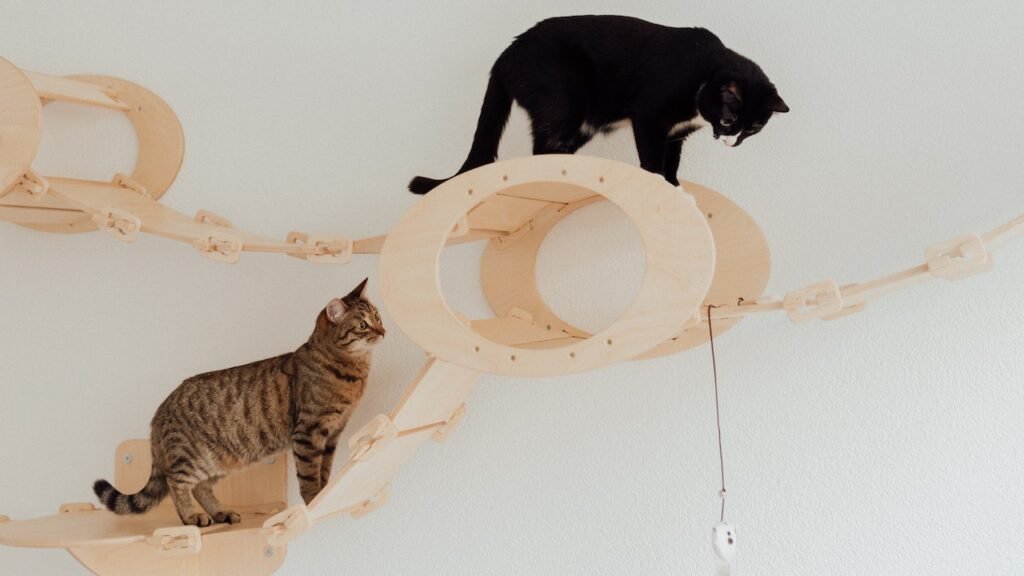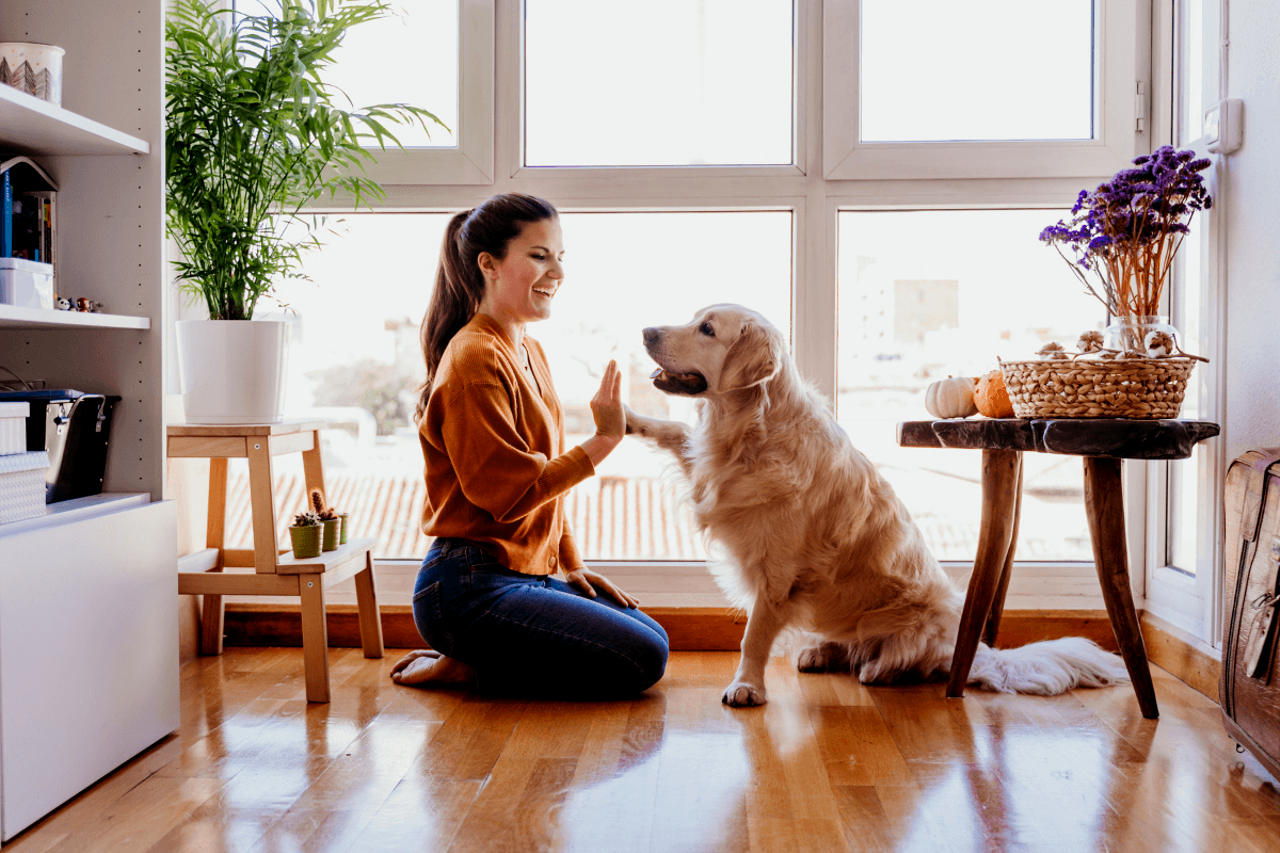In today’s fast-paced world, pets have become more than just animals; they are cherished members of our families. Whether you have a playful pup, a curious cat, or a feathered friend, understanding your pet’s behavior is crucial for building a strong and lasting bond. This article will delve into the fascinating world of pet behavior, offering insights, tips, and strategies to enhance communication and strengthen the bond between you and your furry or feathered companion.
Read More: The Benefits of Training Your Pet
Contents
Decoding Non-Verbal Communication

Understanding Body Language
One of the primary ways pets communicate with us is through their body language. Dogs, for example, use a wagging tail to convey their emotions. A slowly wagging tail may signal curiosity, while a rapid wag could indicate excitement. On the other hand, a tucked tail might suggest fear or anxiety. Paying attention to these cues can help you respond appropriately to your pet’s feelings.
The Importance of Eye Contact
Eye contact is another vital aspect of pet communication. In the animal kingdom, direct eye contact can be seen as a challenge or threat. To improve your bond with your pet, try to maintain soft, gentle eye contact. This will convey feelings of love and trust, making your pet feel more at ease.
Tail Wagging: More Than Just Joy
While many assume that a wagging tail always signifies happiness, it’s important to consider the context. A slow, cautious wag may indicate uncertainty or a need for reassurance, while a high, fast wag typically signifies excitement. Understanding the subtleties of your pet’s tail language can help you respond appropriately to their emotional needs.
Common Behavioral Issues
Separation Anxiety
Separation anxiety is a common issue among pets. When left alone, some animals can become anxious, leading to destructive behaviors. To address this, gradually increase the time you spend away from your pet and offer comfort items such as a favorite toy or blanket.
Aggression and Fear
Aggressive or fearful behavior in pets can be challenging to manage. Seek professional guidance if your pet exhibits aggressive tendencies, as it may be a sign of an underlying issue. Patience, training, and positive reinforcement can help reduce these behaviors.
Excessive Barking or Meowing
Excessive vocalization is a common concern for pet owners. Understand the triggers for your pet’s barking or meowing and address them. Positive reinforcement can help curb excessive vocalization by rewarding quiet behavior.
Positive Reinforcement Training

The Power of Rewards
Positive reinforcement training involves rewarding your pet for desired behaviors. Treats, praise, and affection can be powerful motivators. Consistency is essential in reinforcing positive behaviors.
Clicker Training: A Handy Tool
Clicker training is a useful technique that pairs a clicking sound with a reward. It helps pets associate the sound with good behavior, making it easier to communicate your expectations.
Consistency is Key
Consistency in training is crucial. Ensure that all family members use the same commands and rewards to avoid confusion for your pet. Consistency will reinforce good behavior and strengthen your bond.
Creating a Pet-Friendly Environment
Safe Spaces and Hideaways
Pets need safe and comfortable spaces where they can retreat when they feel stressed or overwhelmed. Create a designated area with cozy bedding and toys to provide your pet with a sense of security.
Enrichment Activities
Engage your pet’s mind with enrichment activities. Puzzle toys, interactive feeders, and playtime can keep your pet mentally stimulated and prevent boredom-related behavioral issues.
Diet and Nutrition
Proper nutrition is essential for your pet’s overall well-being. Consult with your veterinarian to ensure your pet is getting the right diet for their age, breed, and health status.
The Role of Socialization
Early Socialization for Puppies and Kittens
Early socialization is crucial for puppies and kittens. Exposure to different people, animals, and environments at a young age can help prevent fear and aggression later in life.
Socializing Exotic Pets
Exotic pets also benefit from socialization. Gradually introduce them to new experiences and environments, always prioritizing their safety and comfort.
The Human-Pet Bond

Mutual Trust and Respect
Building a strong bond with your pet is built on mutual trust and respect. Be patient, and understanding, and always prioritize your pet’s well-being.
Spending Quality Time Together
Quality time is key to bonding with your pet. Play, cuddle, and engage in activities you both enjoy to strengthen your connection.
Handling Pet Grief and Loss
Coping with the Loss of a Beloved Pet
Losing a pet can be incredibly challenging. Allow yourself to grieve and seek support from friends and family who understand the pain of losing a cherished companion.
Helping Your Pet Through Loss
Pets can also experience grief when losing a companion. Provide comfort and extra attention to help them through the difficult time.
Conclusion
Understanding pet behavior is essential for fostering a healthy and loving relationship with your furry or feathered friend. By decoding non-verbal communication, addressing common behavioral issues, implementing positive reinforcement training, creating a pet-friendly environment, prioritizing socialization, and nurturing the human-pet bond, you can improve communication and strengthen your bond with your beloved pet.
Read More: Top Pet Industry Trends To Know in 2023
FAQs
- How can I stop my dog from barking excessively when I’m not at home? Gradual desensitization, training, and providing engaging toys can help reduce excessive barking.
- What should I do if my cat is scratching furniture? Provide scratching posts, use deterrents, and trim your cat’s nails to prevent furniture scratching.
- Is it possible to socialize older pets? Yes, older pets can still benefit from socialization, although it may take more time and patience.
- What is the best way to handle pet grief and loss? Allow yourself to grieve, seek support, and consider creating a memorial for your pet.
- Can pets sense when another pet has passed away? Yes, pets can often sense the absence of a companion and may exhibit signs of grief themselves.
Understanding your pet’s behaviour is a journey that requires time, patience, and dedication. By investing in this relationship, you’ll not only improve communication but also create a deeper and more fulfilling bond with your pet.




















